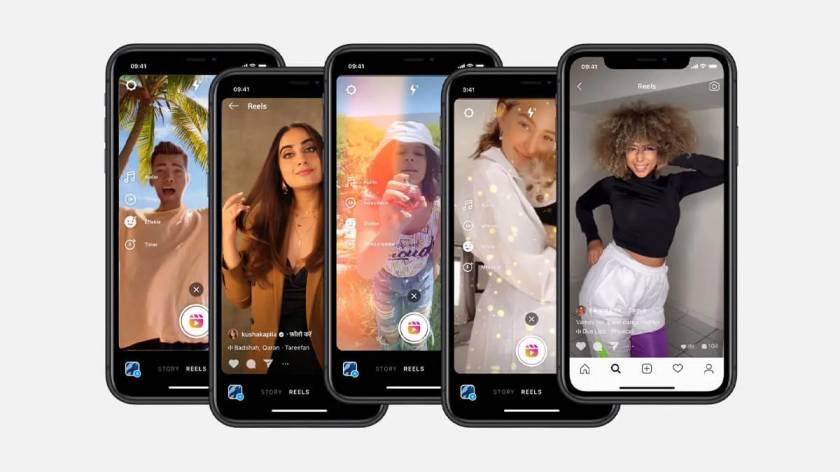In 2024, influencer marketing has become more than just a trend—it’s a cornerstone of many brands’ digital strategies. From small businesses to global enterprises, companies are leveraging influencers to connect authentically with their audiences, drive engagement, and boost sales.
The industry’s rapid growth speaks for itself. The global influencer marketing market size is projected to hit $24 billion in 2024 , with over 50% of brands planning to increase their budgets in 2025. This surge is fueled by shifting consumer behaviors, the effectiveness of influencer partnerships, and the declining impact of traditional advertising methods.
But with all this growth comes an important question: How much does influencer marketing actually cost? Whether you’re running campaigns in-house or working with an agency, understanding the costs involved is essential for planning your budget and maximizing your ROI.
In this guide, we’ll break down the factors that influence the cost of influencer marketing, provide examples to give you a clearer picture, and help you decide the best approach for your brand. Let’s dive in!
Table of Contents
Influencer Marketing Cost & Pricing
Influencer marketing is no longer an add-on; it has become a major pillar of modern brand strategies. Many companies now allocate between 20–30% of their marketing budgets to influencer campaigns. This investment reflects the growing value marketers place on authentic, audience-driven content in a landscape where traditional advertising channels are delivering diminishing returns.
The cost of influencer marketing varies widely depending on the scale of your business, the type of campaign, and whether you manage it in-house or outsource it to an agency. Small businesses with limited budgets often start with nano or micro-influencers, who typically charge between $50 to $1,000 per post, while large-scale campaigns featuring mega influencers with over a million followers can cost upwards of $10,000 per post.
For brands with a more substantial budget, hiring a professional agency offers benefits like access to larger influencer networks, advanced tools, and end-to-end campaign management.
Agency pricing ranges from $5,000 to $100,000 per campaign, depending on the level of service, influencer roster, and the campaign’s complexity.
Running Campaigns In-House
For brands just starting out or working with a limited budget, running influencer marketing campaigns in-house is often the most practical option. This approach allows you to maintain control over every aspect of the campaign while minimizing costs.
In-house campaigns can range from $500 to over $2,000 per influencer, depending on the influencer’s audience size, engagement rates, and deliverables. Nano influencers, with fewer than 10,000 followers, often accept gifted products or lower fees, making them an affordable choice for small businesses. Micro-influencers, with 10,000 to 99,000 followers, typically charge more for partnerships.
Gifted product collaborations are a popular in-house strategy, particularly for B2C brands. For example, a new skincare line might send products to influencers in exchange for authentic reviews or mentions. However, these campaigns often lack enforceable agreements, meaning influencers aren’t obligated to post or align with brand guidelines.
Paid partnerships offer more structure and control. With contracts in place, brands can define content requirements, review deliverables, and ensure a more polished outcome. While this approach requires a larger budget, it results in higher-quality content and a more successful campaign.
Managing campaigns in-house does require a significant time investment. Researching and vetting influencers, negotiating contracts, and monitoring performance can take hours each week. For smaller teams, balancing these responsibilities alongside other tasks may be challenging.
In-house influencer marketing is ideal for brands looking to test strategies or maximize limited budgets. With proper planning and resource allocation, it’s possible to run impactful campaigns while maintaining flexibility.
Working with Agencies
For brands with larger budgets and a desire for streamlined results, working with an influencer marketing agency is often the best choice. Agencies bring expertise, access to established influencer networks, and advanced tools that can simplify the entire campaign process, from strategy to execution.
Agency costs vary widely based on the services offered and the campaign’s complexity. On average, brands can expect to spend between $5,000 to $100,000 per campaign, depending on the size of the influencer network, the level of involvement required, and the agency’s reputation. Some agencies charge a percentage of the campaign budget, typically ranging from 10% to 30%, while others offer flat-rate pricing for their services.
There are three main types of influencer marketing agencies:
- Talent Agencies: These agencies manage a roster of influencers and pair brands with pre-vetted individuals. While this approach ensures quality, it limits access to influencers outside the agency’s network. Expect pricing to start at around $2,000 per month, scaling with the scope of the campaign.
- Platform-Based Agencies: These agencies provide software platforms for brands to search, manage, and track influencer campaigns. Prices for these platforms range from $500 to $10,000+ per month, depending on the features and size of the influencer database.
- Full-Service Agencies: These agencies handle everything from influencer selection to campaign execution and analytics. They often combine access to extensive influencer networks with white-glove management. While more expensive, this option delivers the most value, particularly for brands running large-scale campaigns.
Why Work with an Agency?
Hiring an agency eliminates much of the guesswork and time commitment required for influencer marketing. Experienced agencies stay ahead of industry trends, maintain relationships with reliable influencers, and ensure campaigns run smoothly. From crafting strategies to managing contracts and measuring ROI, agencies offer a comprehensive approach that saves time and maximizes results.
Ultimately, while working with an agency requires a larger budget, it’s a worthwhile investment for brands seeking impactful, results-driven influencer marketing campaigns.
Five Factors that Affect The Cost of Influencer Marketing
In addition to the cost difference between in-house and agency services, there are many factors that could influence the cost of your influencer marketing campaign. In this section, we want to discuss the five most common factors that could affect the cost of influencer marketing.
1. Social Media Channels
The social media channels that your campaign is implemented on affects the cost. For example, YouTube tends to be the most expensive social channel for influencer marketing since long-form videos take more effort to produce. Instagram, one of the most popular social media channels for influencer marketing, has a higher “market rate” than other channels such as Twitter. In addition, the number of channels used for your influencer marketing campaign will change the cost, as well. For example, a campaign that is only implemented on Instagram would be cheaper than a campaign that is implemented cross-channel on Instagram, YouTube and TikTok.
Learn more about the best social channel for your campaign:
How to Choose The Best Social Media Channel for Your Campaign
2. Size of the Influencer’s Audience
Even though the number of followers an influencer has cannot accurately determine the value of the influencer, it is still one of the factors used in quantifying the “influence power”. Therefore, an influencer’s number of followers can affect the cost of the campaign drastically. Typically, influencers with a larger following will cost more to hire. For instance, mega influencers with over 1 million followers can charge tens of thousands of dollars for sponsored content. While micro-influencers with about 10k – 100k followers could charge $50-$1,000 or more per post.
Of course, these numbers are only averages for your reference. The prices vary tremendously from case to case. To know the exact cost of hiring an influencer, you can reach out to them and ask for a quote. There are also free online tools that allow you to simply input an influencer’s social handle and the calculator will tell you an estimated cost for the influencer. These tools are helpful in getting your pricing in the right ballpark but they too are just rough estimates.
3. User Engagement
Since the number of followers cannot always represent the value of an influencer, brands use engagement as another important metric to determine an influencer’s price. Engagement measures how many people actually react to the influencer’s content. A higher engagement rate often means a higher potential audience reach of the content. Therefore, if you collaborate with influencers who can generate high engagement rates, the cost will be higher. At Get Hyped, engagement is one of the metrics that we give the most weight to when choosing qualified influencers to partner with.
4. Product & Industry
Your product and industry can affect the cost of your influencer marketing campaign as well. Some industries are more popular among influencers, such as the lifestyle niche. Since “lifestyle” is a broader segment that has many influencers, the average price tends to be lower. On the other hand, if your brand is in a more specific niche, like consumer tech, where less influencers are available, you might need to pay a higher price to hire the big players in your niche.
5. The Type of Campaign
Finally, the type of influencer marketing campaign you want to run can have an impact on the cost. For example, running a gifted or product-for-post campaign can cost less since the brand only needs to provide free products to influencers in exchange for content and brand mentions. While an affiliate campaign that provides influencers with exclusive promo codes and pays influencers with commission could lead to a higher cost.
Some campaigns that require a larger scope of work also could cause a higher cost of campaign coordination and management. Large-scale influencer marketing campaigns that involve hundreds of influencers, for instance, require the campaign manager to actively be in touch with all those influencers on an ongoing basis. These types of campaigns also require time to coordinate and develop long-term partnerships with influencers. Despite the setup and execution challenges, we have to point out that long-term partnerships with influencers can bring tremendous value to your brand. Long-term partnerships allow influencers to create consistent content around your brand, and this can help your brand to get continuous exposure to your target audience. As a result, the exposure accrues brand affinity that can skyrocket your ROI.
Conclusion
Now do you have a better idea of how much you should invest in influencer marketing for your brand? Remember there is no one-size-fits-all formula to determine the costs of influencer marketing. Each brand and campaign is unique.
Depending on the social media channels, campaign types, the industry, and influencers that you collaborate with, the cost will vary. It’s OK to start with a smaller budget and increase it over time when you are comfortable with the results. Working with a qualified influencer marketing agency can also help you ensure that you are making the best use of your budget and maximizing your ROI.
Do you need help designing and executing an effective influencer marketing campaign for your brand? Send us a message below and we can set up some time to review your goals.




